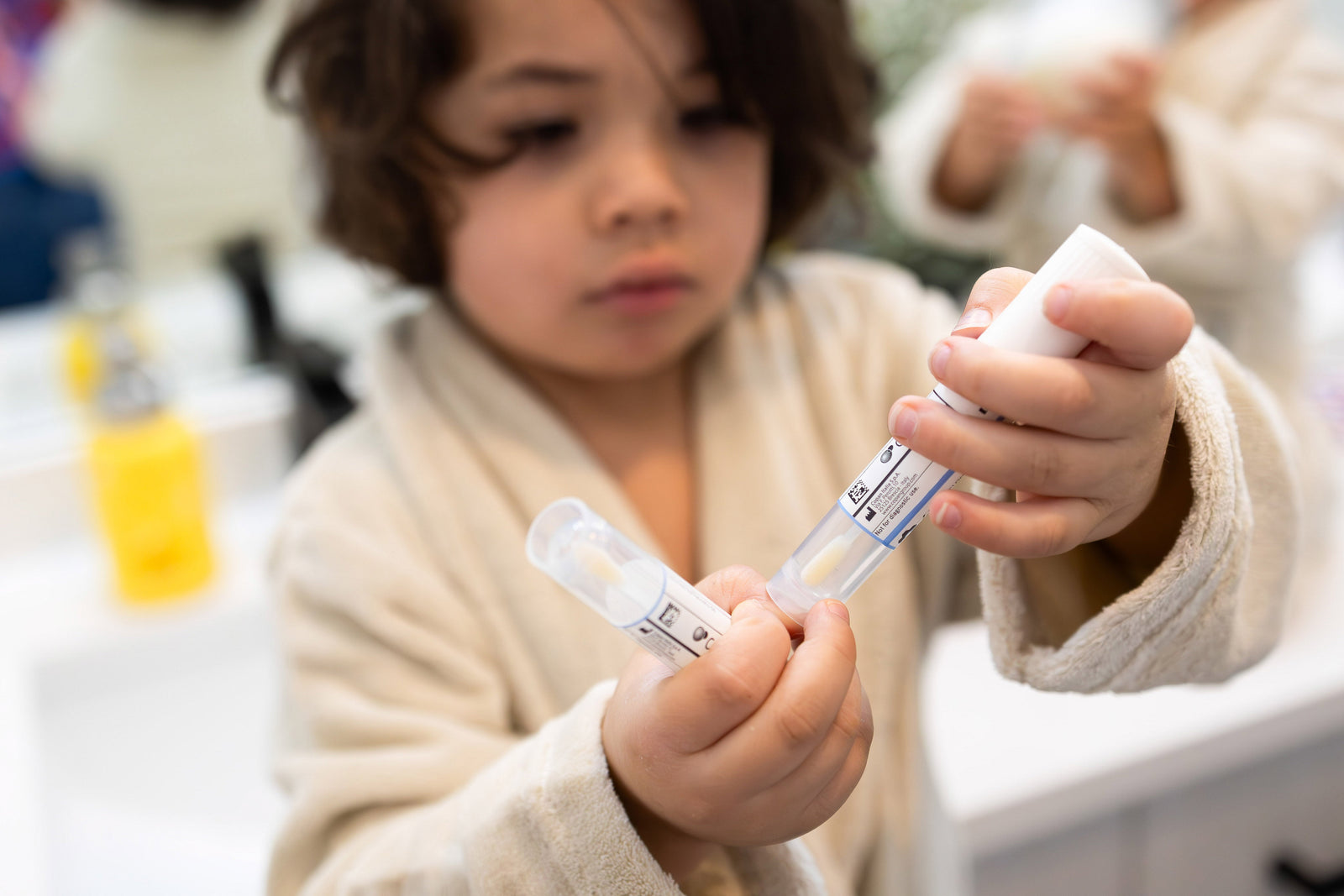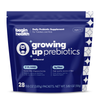Your Cart is Empty
Continue shoppingProbiotics vs. Prebiotics for Kids: Understanding the Difference and Benefits
Medically Reviewed by May Zhu, RDN | Published August 15, 2023
share this article

Research has shown that 70% of the immune system is in the gut, so the condition of our kids’ gut health is crucial to their overall well-being [12]. Not only does a balanced gut support healthy digestion, but it also plays an important role in supporting their immunity as well [13]. In recent years, the use of probiotics and prebiotics has gained significant attention for their potential benefits in supporting a kid's gut health. Prebiotics and probiotics may sound similar, but they have very distinct characteristics. In this article, we will explore the science behind probiotics and prebiotics, shedding light on their distinct roles and uncover the unique benefits they can potentially provide for our kiddos’ gut health.
What are Probiotics?
Probiotics are live, beneficial bacteria that provide health benefits when consumed in adequate amounts [2]. They are found in certain foods like yogurt or supplements and help maintain a balanced microbiome. Probiotics work by colonizing the gut with beneficial bacteria that can support digestion. Scientists have identified hundreds of thousands of probiotic strains, but two of the most common and studied strains in kids include Bifidobacterium and Lactobacillus [6, 9].
Possible Benefits of Consuming Probiotics Include:
-
Supports the Gut Microbiota-Brain Axis and Mood. The gut microbiota-brain axis is the communication between the brain and the gut. Possible health influences from a regular probiotic intake may include regulation of mood and anxiety. Probiotics affect mood through their ability to modulate pain in the gut. A study reported that the administration of Lactobacillus in the treatment of kids with functional abdominal pain (FAP) and irritable bowel syndrome (IBS) is associated with a possible reduction of the intensity of pain [15].
-
Allergy support. Studies indicate an early imbalance in the gut microbiota of newborns may be related to future atopic diseases, such as asthma or rhinitis [9]. The specific health benefits vary between probiotic strains. Most studies suggest that the administration of Lactobacillus and Bifidobacterium in kids have shown beneficial effects, such as a reduction in hyperreactivity and inflammation caused by allergens [10].
It’s important to note that probiotics may not be right for all demographics. Always with your pediatrician before giving probiotic supplements to your little ones.
Key Takeaway 1:
Probiotics are the good bacteria found naturally in foods like yogurt. Introducing friendly bacteria like Lactobacillus and Bifidobacterium to the gut can help support symptoms related to digestive health and allergy support in kids.
What are Prebiotics?
Prebiotics, on the other hand, are non-digestible fibers that serve as food for the probiotics in the microbiome. They act as nutrition for these friendly bacteria strains, stimulating their growth and promoting a thriving gut microbiome. The foods we choose to feed our kiddos are important because it directly influences what the good bacteria feed on in our little one’s gut.
Possible Benefits of Consuming Probiotics Include:
-
Increase in beneficial gut bacteria. Specifically, Bifidobacterium and Lactobacillus, two strains of friendly gut bacteria in our kiddo’s microbiome [6,7,9]
-
Increased nutrient absorption. Prebiotics can help the body absorb minerals, such as calcium which we need to support bone health [7]
-
Immune system defense. The fermentation of prebiotics can influence the immune cells found in our gut, where 70% of our immune system is found [7, 12].
Our Growing Up Prebiotics contains prebiotic fiber from chicory root, designed to help with softer stooling and improved gut bacteria [5]. In six weeks with daily consistent use, our clinical research on our chicory root fiber demonstrates an increase in stooling frequency, a softer consistency, and a decrease in pain in kids [4].
Daily reads to help your little ones lead happier and healthier lives.
Buy Now
Join the
Happy Gut Club
Key Takeaway 2:
Prebiotics help nourish the probiotics in our little one’s microbiome. Consuming foods with prebiotic fiber can help increase good gut bacteria, support nutrient absorption, and influence the immune system in our kids.
Similarities Between Probiotics and Prebiotics
Both probiotics and prebiotics work together in maintaining a balanced gut environment and promoting healthy digestion. Together, they work to support gut health by:
-
Improving Bowel Movement Frequency
Probiotics introduce beneficial bacteria directly into the gut, while prebiotics nourish and support the growth of these good bacteria. Synbiotics is the term used to describe the synergistic effect of combining both probiotics and prebiotics. Research evaluating the efficacy of synbiotics in kids found that synbiotic interventions helped support digestive health by improving the frequency of weekly bowel movements and lead to an increased amount of bifidobacteria, the good gut bacteria in their microbiome [11].
-
Softens Stool to Support Constipation
Constipation can be a common issue for kids, causing stomach discomfort. Prebiotics can help support constipation symptoms by increasing gut motility and movements [12] In particular, chicory root fiber specifically helps soften the stool and can help increase stooling frequency [4].
Differences Between Probiotics and Prebiotics
Besides the specific roles they play in the microbiome, the differences between probiotics and prebiotics comes down to the food sources they are found in. Getting probiotics and prebiotics into your kiddos’ diet doesn't have to be complicated. There are several probiotic-rich foods that kids can consume regularly, including:
- Yogurt
- Kefir
- Fermented vegetables, such as kimchi
Similarly, prebiotic sources can be incorporated into your little one’s diets by including foods that are rich in fiber. Examples of prebiotic fiber include:
- Apples
- Oats
- Avocados
It’s important to note that sometimes dietary sources may not be sufficient to meet the required levels of probiotics and prebiotics, especially if your kid has specific health conditions or dietary restrictions. In such cases, supplementation can be an option, but always check with your kid’s pediatrician first before introducing a new supplement routine. Your pediatrician can provide tailored recommendations based on your little one’s individual needs.

Author
May Zhu, RDN
Trending

Inc. Names Begin Health to Its 2025 List of the Fastest-Growing Private Companies in the Midwest
read now
Oxalates and Kids' Digestion: How High-Oxalate Foods Contribute to Constipation and Gut Discomfort
read now
5 Signs Your Toddler Needs a Poop Test
read now






